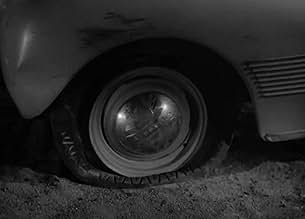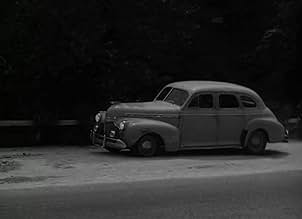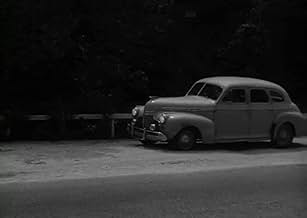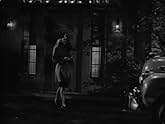Una gángster herida de muerte relata cómo ella y su banda revivieron a un asesino ejecutado en la cámara de gas para tratar de averiguar dónde había enterrado una fortuna en efectivo.Una gángster herida de muerte relata cómo ella y su banda revivieron a un asesino ejecutado en la cámara de gas para tratar de averiguar dónde había enterrado una fortuna en efectivo.Una gángster herida de muerte relata cómo ella y su banda revivieron a un asesino ejecutado en la cámara de gas para tratar de averiguar dónde había enterrado una fortuna en efectivo.
- Dirección
- Guionistas
- Elenco
- Margot Shelby
- (as Miss Jean Gillie)
- Tommy
- (as Phil Van Zandt)
- Chaplain
- (sin créditos)
- Policeman
- (sin créditos)
- Trucker at Roadside Inn
- (sin créditos)
- Kelsey
- (sin créditos)
- First Visitor
- (sin créditos)
- Driver
- (sin créditos)
- Georgia - Margot's Maid
- (sin créditos)
- Dirección
- Guionistas
- Todo el elenco y el equipo
- Producción, taquilla y más en IMDbPro
Opiniones destacadas
While probably it can't ever live up to the inflated legend that trails in its wake, it's decidedly no disappointment. Monogram and its raffish rivals on Poverty Row shot fast and cut corners, working from fast-and-loose scripts full of implausible chunks of plot for viewers either to swallow or choke on. Usually, the results were shoddy and forgettable. But now and again enough elements came together to generate unexpected chemistry. Decoy marks one such serendipitous occasion.
The key element in this explosive reaction is Jean Gillie, an English actress whose early death in 1949 deprived cinema of one of its darkest Jezebels. Like her compatriot Peggy Cummins (Annie Laurie Starr in Gun Crazy), she makes no attempt, as Margot Shelby, to Americanize her origins; in explanation, Decoy lets her spit out her contempt for poverty in an eloquent aria about that 'dingy, dirty street' that 'runs all over the world,' and through the sooty mill town in England she came from. She vows never to go back to want, and her unquenchable greed powers the plot.
Tricked out in haut-forties snoods, stoles, muffs and dead-serious hats, Gillie cuts a swath through the various men who stand between her and the $400-grand stolen by her gangster boyfriend (Robert Armstrong. Trouble is, he's the only one who knows where it's stashed but won't tell even though he's on death row.
But her days as a high-maintenance moll have taught her a thing or two, one of them that a tincture called Methylene Blue can reverse an execution by cyanide. She works her wiles on maverick mobster Edward Norris and an idealistic doctor who does prison autopsies (Herbert Rudley), enlisting them in her gruesome scheme. They hijack the fresh corpse, en route to an 'oven job,' and, in a sequence reminiscent of Frankenstein, bring it back to life.
Still, the tight-fisted old zombie won't trust them, instead roughing out a map to the buried strongbox but keeping half (why just half?) against the prospect of this second coming's failing to take. It's a turn of events that kicks Gillie's avarice into lethal overdrive....
Though the movie wouldn't be remarkable without Gillie, it shows a fair amount of craft. From his 11 recorded directorial credits, Jack Bernhardt couldn't have been expected to contribute much, but he adds some arresting details (a sprung window shade in the doctor's office among them) and an offbeat pace. He splits the ending in two, leaving half in its proper place and opening the movie with the other, in a gas-station men's room where the shattered mirror and filthy sink outdo one another as emblems of last-ditch squalor. Police detective Sheldon Leonard figures prominently in those two segments; the rest of the movie is told in extended flashback.
There's barely a moment when Gillie isn't front and center, for which gratitude should be fulsome. She delivers a go-for-broke performance, short on nuance but long on the flamboyant gesture. She coldly guns the motor to run down one of her victims, skitters into hysterical giggles when she shoots the next, and, dying, laughs in Leonard's face after coaxing him to kiss her ('Jo Jo, just this once, come down to my level'). She's a knockout, and because of her the elusive Decoy, despite the inevitable shortcomings of its Monogram origins, can be counted a knockout, too film noir with no frills.
Once you get past the reincarnation, the plot is fairly conventional set pieces which mostly hold up and which benefit from a honey of a twist at the end. Along the way there, we get to see greed, betrayal, spinelessness, insanity, bravery, more betrayal, submission, redemption and more Jean Gillie, whose gin blossom charm and hyena-like guffaw at once blends Richard Widmark's killing debut in KISS OF DEATH with the murderous cackle of SPECTRE in the mirrored killmaze in MAN WITH THE GOLDEN GUN. Either way, she is death and she is irresistible. As is this movie. Find it and you'll see.
Jean Gillie was married to this film's director. This was his attempt to make her a star. Unfortunately nobody really became a star making pictures for Monogram, no matter how good they may have been. A short time later the pair divorced and Gillie moved back to England. She died there of pneumonia at the age of 33, just 3 years after this was released. Gillie showed how much potential she had in this movie. It's a shame her life was cut so short. Nice to see Sheldon Leonard playing a detective. He was usually playing tough gangsters. He's plenty tough here, even if he is on the right side of the law. Edward Norris and Herbert Rudley are both good. Robert Armstrong, the biggest name in the picture at the time, has little screen time as the executed boyfriend but does well with what he has.
Exceptional film noir from Monogram, a Poverty Row studio not known for much that was exceptional. There are a lot of memorable moments in this one. The beginning and ending are really great. The atmospheric scene where Armstrong is brought back to life is another highlight. With a couple of changes this could have easily been turned into a horror movie like The Man They Could Not Hang. It's definitely one you'll want to check out.
Robert Armstrong's "Frank Olins" had to endure all that one day. He's the crook who has the money stashed away somewhere and "Margot Shelby" (Jean Gille) is the woman who is bound-and-determined to get it - all of it. "Frank" claims a few times that if he isn't going get the money when he gets out of jail, nobody will and those aren't words that "Margot" wants to hear! Frank knew this dame and other members of his gang, most notably "Jim Vincent" (Edward Norris) were not trustworthy.
Well, he certainly was right about "Margot." She's the femme fatale - one mean mother - who has only one thing on her mind: money. She never wants to return to her old, poor, dingy ways of her youth in small town England. Now, she's in America, part of gang and she knows how to manipulate men. Of course it helps to be extremely pretty and have a great body, which she does. She plays the men and, well.....like most noirs, the ending is not particularly a happy one for most of the characters in this story.
Personally, in this film I enjoyed seeing a lot of familiar faces from TV programs and such of the 1950s, beginning with a young Sheldon Leonard who plays the tough, pursing cop in this movie. I also thought Armstrong sounded a lot better than in his early '30s adventure stories. Speaking of sound, the music in here was ill-timed, dominating some scenes which took away from the dialog.
Make no mistake, though: this is Gilles' movie. For classic movie fans and particular film noir buffs, this is worth checking out. It's always fun to see a new "face," and that certainly applies to Gillis, whose character reminded me a bit of Peggy Cummins' one in "Gun Crazy."
I thought the ending of this film - the final minute - was especially good. So many times, you get the ending that doesn't stay true to the main character, but this one did.
¿Sabías que…?
- TriviaMethylene blue is a real chemical compound, discovered in 1896 (by Heinrich Caro), which does indeed have the ability to counteract cyanide poisoning. This property was discovered in 1933 by Dr. Matilda Moldenhauer Brooks of San Francisco. It will not, however, restore life to those who have died from cyanide poisoning.
- ErroresWhen Joe walks into the bar, he pauses by the piano. The piano player raises his left hand off the keyboard to wave to Joe, but the piano music continues as if both his hands are still playing.
- Citas
Sergeant Joe Portugal: Don't let that face of yours go to your head.
Margot Shelby: Or to yours?
Sergeant Joe Portugal: It wouldn't matter if did... People who use pretty faces like you use yours, don't live very long anyway.
- ConexionesFeatured in Film Noir: Bringing Darkness to Light (2006)
Selecciones populares
- How long is Decoy?Con tecnología de Alexa
Detalles
- Tiempo de ejecución
- 1h 16min(76 min)
- Color
- Relación de aspecto
- 1.33 : 1































